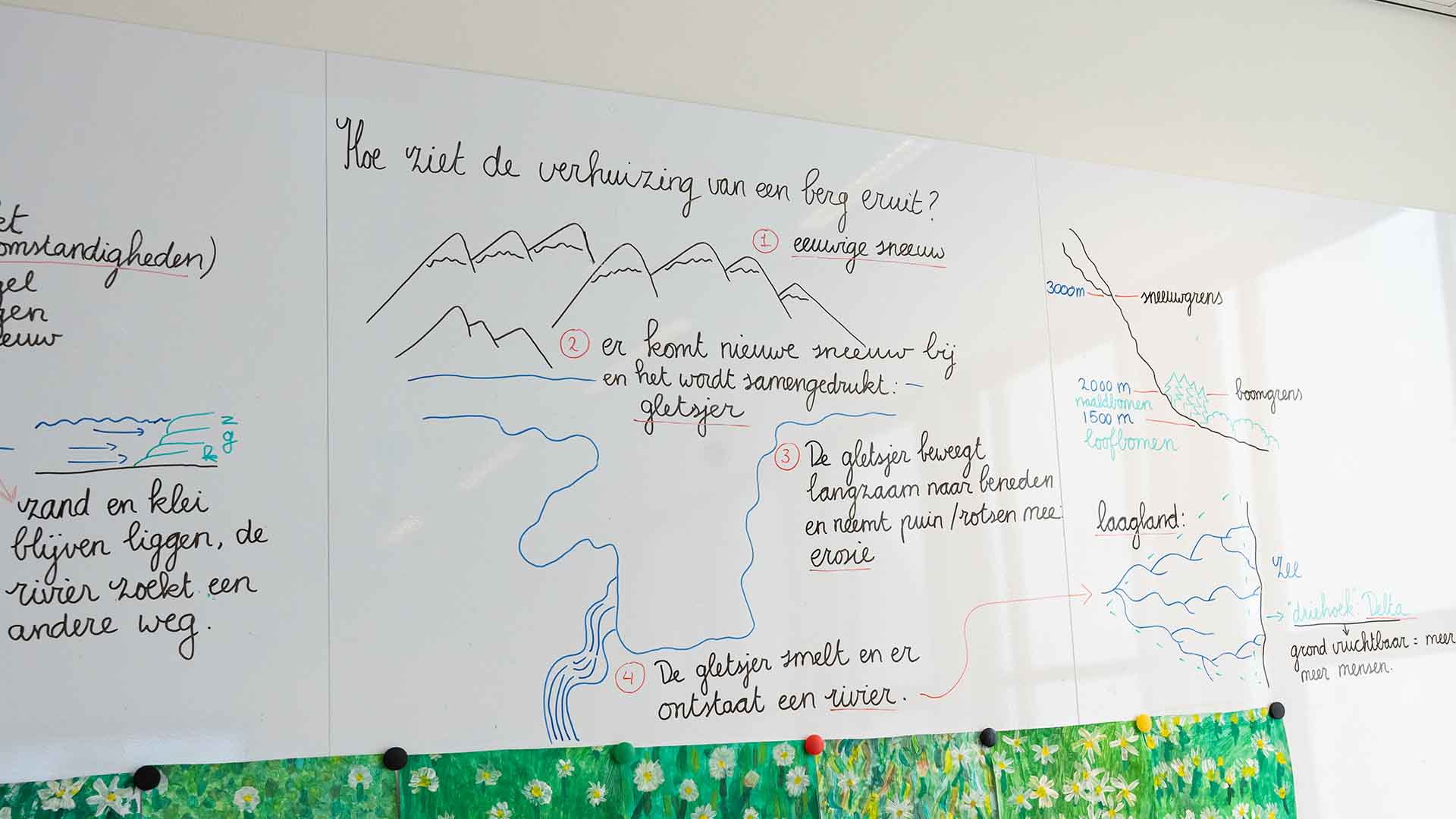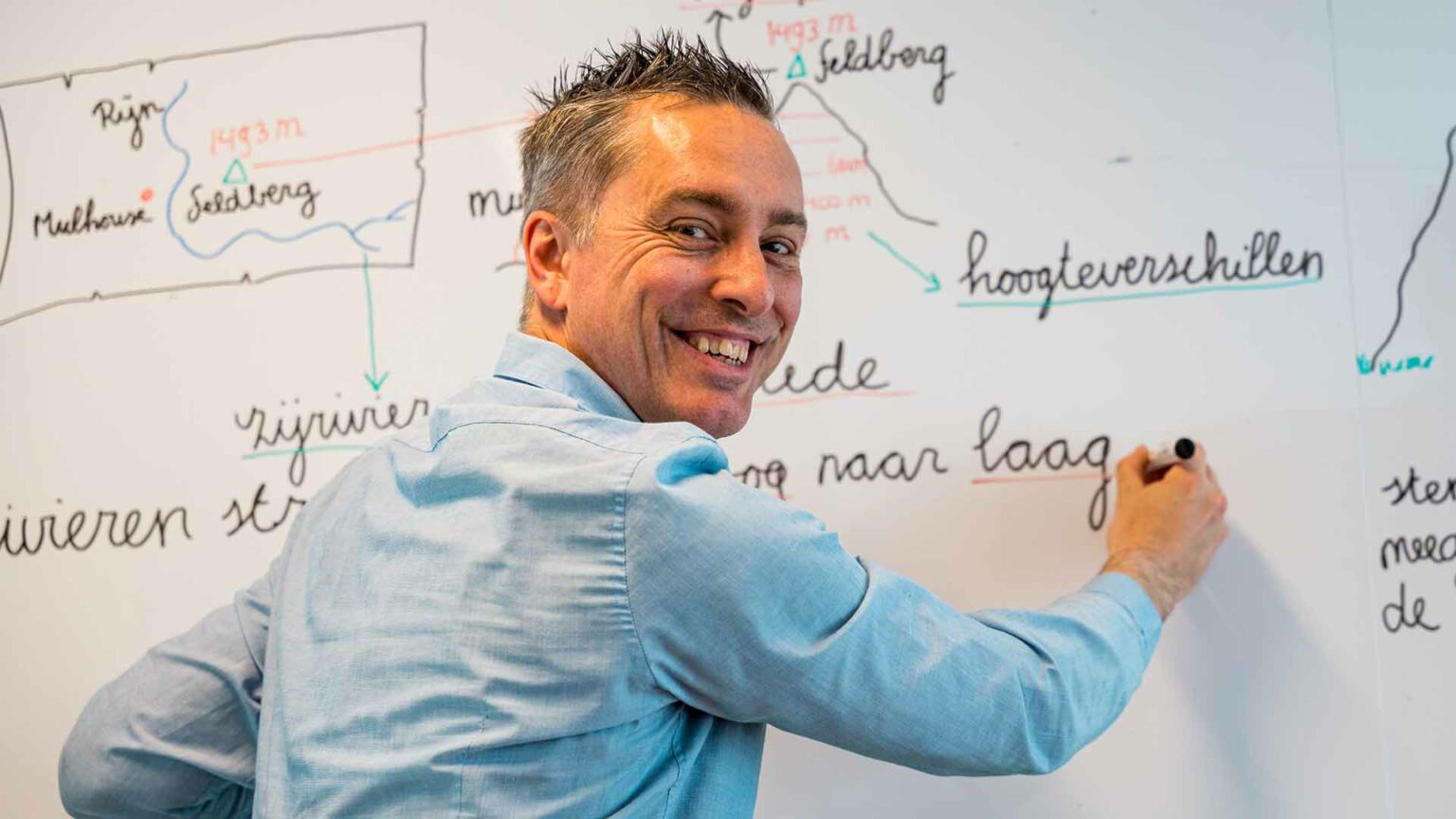In this interview, Chameleon speaks with Marcel Schmeier, education consultant and author, about the importance of traditional boardwork in modern classroom teaching. He shares his insights and experiences on the effective use of traditional boardwork in the classroom, discussing its advantages, challenges, and best practices.
Talking with education consultant Marcel Schmeier about traditional boardwork in modern classroom teaching
Who is Marcel Schmeier?
Marcel Schmeier has a comprehensive career in the field of education, with experiences as a teacher, internal mentor, and now as an education consultant. He is known for his books on explicit direct instruction, traditional boardwork, effective arithmetic, and reading comprehension. In his role as a consultant, he helps schools improve their teaching methods with evidence-based approaches.
What is traditional boardwork?
Traditional boardwork work encompasses various forms of visual support in teaching. In addition to simple keywords and sketches, traditional boardwork can also include diagrams, mind maps, and other visual representations. The goal is to structure and clarify the subject matter and to enhance student engagement.
How did you come to the conclusion that traditional boardwork is the most effective teaching method?
My conviction is based on both scientific findings and my own experiences in education. Studies show that students learn better when they receive information both visually and auditorily. Writing on the whiteboard creates a common learning environment where students can participate actively.
During my training in explicit direct instruction at Waldorf schools, I came across the use of whiteboards instead of PowerPoint presentations. This led me to delve into cognitive learning psychology, where I discovered the importance of the dual-coding approach: learning through the processing of both visual and auditory information.
What does traditional boardwork look like in different school systems?
At the elementary school De Drie Koningen in Meern, they test what students remember in a clever way. On the back wall of the classroom, whiteboards with information are hung. During the lesson, the students turn around and are given a task that involves drawing or describing something, like what grows at different altitudes on a mountain. This promotes active thinking and memory. Once they have completed their task, they turn back and compare their work with the information on the whiteboards. This provides immediate feedback, allowing them to see what they have retained. This approach promotes critical thinking, makes learning more dynamic, and increases student engagement.
Teachers at secondary schools often find that students have difficulty writing, possibly due to less attention being paid to writing skills in elementary school. Traditional boardwork can improve this by encouraging students to take notes and develop their writing skills.
Universities train teachers using evidence-based methods. I have participated in a program where prospective teachers learn both theory and practical skills, such as writing on whiteboards. This approach provides new teachers with practical and scientifically grounded skills, contributing to improved teaching quality.


Is everyone immediately enthusiastic about traditional boardwork?
At first, many students found the idea of traditional boardwork unappealing. They preferred modern technology, where you could simply press or swipe buttons. They weren’t used to writing much, and urban schools had similar issues. Convincing them of the importance of blackboard work was a challenge, as they saw it as additional work. However, once they started, their attitude changed. They became excited, asked when they could draw visual elements themselves, and were happy to take notes. This approach significantly improved the learning experience, proving that a small change can make a big difference.
Visualization is an important aspect of traditional boardwork. How are teachers trained and supported to improve their visualization skills?
The traditional craft of whiteboard work has been partially lost. Previously, educational materials offered detailed instructions on setting up traditional boardwork with a structure of three black panels, which helped teachers organize the whiteboard. Nowadays, many teachers lack these skills because modern handbooks no longer contain these guidelines. Therefore, teachers must decide for themselves how to organize their traditional boardwork. I support schools in rediscovering these skills so that teachers can create an effective teaching structure and visually appealingly convey knowledge to students.
How can the effectiveness of traditional boardwork work be measured, and to what extent does it reflect on student performance?
Special education schools, where students often have severe behavioral problems, start the lesson with an empty whiteboard to minimize distractions and create focus. The teacher might say, for example, “Today, we’re learning about verbs. Write ‘verb’ on the whiteboard and give an example in a sentence.” This promotes engagement.
A full whiteboard with information or images can quickly distract these students, leading to restlessness and disruptions. An empty whiteboard encourages active participation and helps students stay focused.
Schools using this approach find that students are more engaged, less distracted, and understand the subject matter better. This shows that a small adjustment can have a significant impact on student behavior and performance.
What tools can teachers use to create visual elements faster and more efficiently on the whiteboard?
If teachers aren’t artists, I recommend using simple pictograms or icons as visual support. Look up simple images on Google that are easy to draw, like “frog icon” or “crown icon.” For more complex images, you can use printouts or tracing, starting with smaller amounts of information on the whiteboard to avoid overwhelming the students. This keeps traditional boardwork clear and encourages engagement.
To what extent does using a digital board align with the principles of traditional boardwork?
Digital boards can make the teaching experience more passive and speed up the pace. Teachers who prepare a lot may sometimes overestimate how much the students understand. By writing directly on the whiteboard, they can better align the teaching pace with the students. The SOI model supports this: “Select” for word choice, “Organize” for structure, and “Integrate” for broader context.
With traditional boardwork, teachers can place the lesson in a broader context, promoting coherence. Digital boards often have less writing space due to menus and larger letters. Although you can open multiple screens, this can disrupt the structure. Writing live remains more effective, as it builds the lesson at a logical pace.
Conclusion
Traditional boardwork is essential in classroom teaching because it supports visual and auditory learning, promotes engagement, and stimulates active learning. Traditional boardwork, like whiteboards, offers flexibility to adjust the pace of the lesson to the students. Digital boards have their advantages but can make teaching more passive. With a good balance, teachers can increase engagement and improve the learning experience.
For more information on traditional boardwork, visit www.onderwijsgek.nl or order the book at onderwijsgek.nl/boeken.


